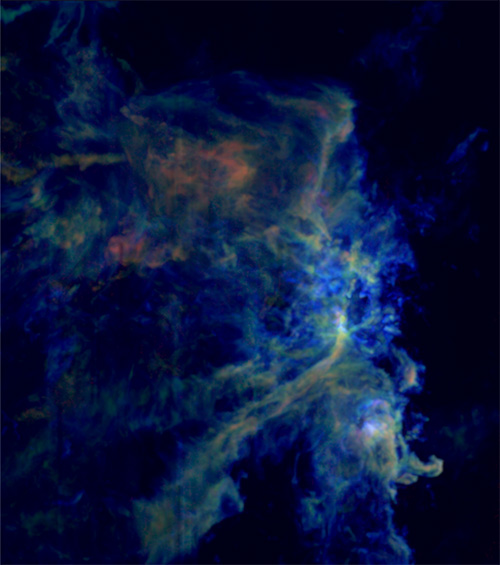Dust clouds reveal new information about the birth of stars
Headlines, Scientific culture, Research
On January 15, 2021

Thanks to artificial intelligence, astrophysicists were able to better understand a lasting secret of the universe: how stars are born.
How are stars born? Until recently, the question was difficult for astrophysicists to answer because the hydrogen that makes up stars is not detectable in its molecular form at the very low temperatures found in the dust clouds from which stars are born. However, experts in the field of signal and image analysis were able to unite their forces as part of the ORION-B program (in reference to a famous dust cloud) in order to set up new techniques using artificial intelligence that can help solve this mystery.
While hydrogen cannot be detected, these dust clouds contain other tiny dust particles and molecules that can be traced. For example, CO can be found in an approximate proportion of one CO molecule for 10,000 hydrogen molecules. By itself this information is imprecise, but when combined with other molecule proportions researchers are able to estimate the quantity of hydrogen present in a cloud. However, this is where things get complicated because physicists were faced with the extremely complexe physics and chemistry mechanisms that govern the connections between molecules.

As part of the ORION-B* program led by IRAM (Institut de Radioastronomie Millimétrique), a group of researchers including Jocelyn Chanussot, a researcher and professor at Grenoble INP in the GIPSA-lab** were able to develop new methods using artificial intelligence and deep learning in order to study the observations of clouds across a spectrum of 240,000 light frequencies. In concrete terms, this allowed them to render usable hyperspectral*** images obtained via radio telescopes that target the Orion cloud. “The raw images are full of noise much like when you watch a tv that doesn’t receive a specific channel. However, useful information is hidden within all this noise. To use it, you have to get rid of the excess noise,” explains Jocelyn Chanussot.
This is a complicated task as the noise can vary from one pixel to another and sensors move in the interval between two images. As a result, classical algorithms to reduce noise cannot handle the task. By analysing the data from dedicated artificial intelligence algorithms, the ORION-B researchers were able to access information that was heretofore inaccessible. These calculations notably enabled them to precisely estimate the quantity of hydrogen and free electrons in the cloud without having to observe them directly. These two factors play a major part in guiding the mechanisms that control the birth of stars.
Defining the quantity of material available in a cloud for star formation is only the beginning. Another challenge is to extract data about the movement of material in order to further understand the collapse of gas during the creation of a star.
Photo credit: Radioastronomic view of ORION-B, @Jérôme Pety, IRAM
* https://www.iram.fr/~pety/ORION-B/
**CNRS, Grenoble INP, UGA
***This differs from panchromatic imaging which only renders information based on light intensity (grey levels), or color imaging which only measures information in primary colors (red, green and blue). Hyperspectral imaging measures information across several hundred wavelengths that span the visible, infrared and radio-astronomy ranges.
While hydrogen cannot be detected, these dust clouds contain other tiny dust particles and molecules that can be traced. For example, CO can be found in an approximate proportion of one CO molecule for 10,000 hydrogen molecules. By itself this information is imprecise, but when combined with other molecule proportions researchers are able to estimate the quantity of hydrogen present in a cloud. However, this is where things get complicated because physicists were faced with the extremely complexe physics and chemistry mechanisms that govern the connections between molecules.

As part of the ORION-B* program led by IRAM (Institut de Radioastronomie Millimétrique), a group of researchers including Jocelyn Chanussot, a researcher and professor at Grenoble INP in the GIPSA-lab** were able to develop new methods using artificial intelligence and deep learning in order to study the observations of clouds across a spectrum of 240,000 light frequencies. In concrete terms, this allowed them to render usable hyperspectral*** images obtained via radio telescopes that target the Orion cloud. “The raw images are full of noise much like when you watch a tv that doesn’t receive a specific channel. However, useful information is hidden within all this noise. To use it, you have to get rid of the excess noise,” explains Jocelyn Chanussot.
This is a complicated task as the noise can vary from one pixel to another and sensors move in the interval between two images. As a result, classical algorithms to reduce noise cannot handle the task. By analysing the data from dedicated artificial intelligence algorithms, the ORION-B researchers were able to access information that was heretofore inaccessible. These calculations notably enabled them to precisely estimate the quantity of hydrogen and free electrons in the cloud without having to observe them directly. These two factors play a major part in guiding the mechanisms that control the birth of stars.
Defining the quantity of material available in a cloud for star formation is only the beginning. Another challenge is to extract data about the movement of material in order to further understand the collapse of gas during the creation of a star.
Photo credit: Radioastronomic view of ORION-B, @Jérôme Pety, IRAM
* https://www.iram.fr/~pety/ORION-B/
**CNRS, Grenoble INP, UGA
***This differs from panchromatic imaging which only renders information based on light intensity (grey levels), or color imaging which only measures information in primary colors (red, green and blue). Hyperspectral imaging measures information across several hundred wavelengths that span the visible, infrared and radio-astronomy ranges.
Published on January 21, 2021
Updated on January 21, 2021
Updated on January 21, 2021

